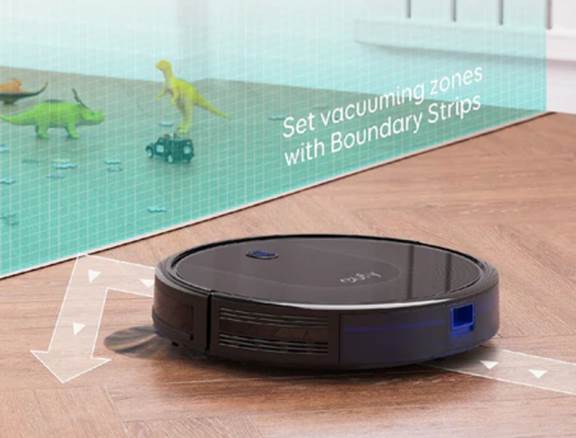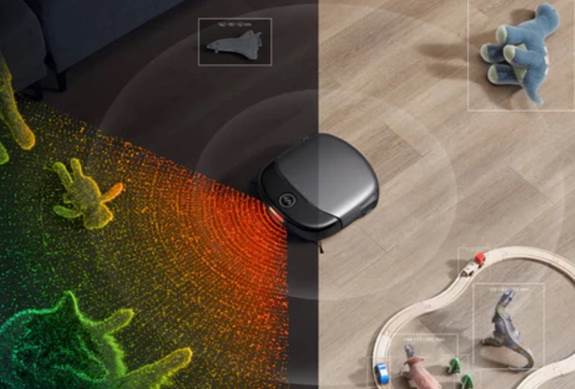Mapping
technology revolutionizes robot vacuum efficiency, transforming cleaning into a
precise and tailored activity. With advanced sensors and mapping technologies,
robot vacuums now navigate your home with accuracy and intelligence. how do robot vacuums map a room? These smart devices optimize cleaning routes, ensuring
every corner gets the attention it needs, efficiently tackling dust and debris.
Understand how mapping enhances cleaning performance, offering improved
coverage and smarter navigation. Exploring this technology reveals energy
savings, reduced cleaning time, and the ability to tailor cleaning schedules to
fit your lifestyle. Learn how mapping sets apart sophisticated models, paving
the way for cleaner, smarter homes.

How Robot
Vacuum Mapping Works
Sensors and SLAM Technology
At
the heart of a robot vacuum’s mapping capabilities are its sensors and SLAM
(Simultaneous Localization and Mapping) technology. These elements work
together to create accurate maps of your home. Sensors, including infrared,
laser distance, and cameras, gather real-time data about the environment. This
data feeds into SLAM algorithms, which build a dynamic map while tracking the
vacuum’s position. The vacuum uses this evolving map to navigate your home,
allowing it to adjust its route based on the current layout and obstacles. This
ensures coverage of the entire area and prevents unnecessary overlaps, making
cleaning more efficient.
Creating and Updating Home Maps
Robot
vacuums begin by conducting an initial scan of your home, using their sensors
to collect environmental data. During this phase, the device identifies walls,
furniture, and open spaces, establishing a comprehensive map. As it continues
to clean, the vacuum updates its map to adapt to changes like moved furniture
or added decor. Users can access these maps via mobile apps, providing insights
into cleaning patterns and areas covered. Advanced models offer features like
automatic map updates and editing options, enabling homeowners to refine the
map for greater cleaning precision. This dynamic mapping capability allows for
consistent and adaptive cleaning performance, ensuring the device remains an
effective tool in maintaining your home’s cleanliness.
Benefits of
Mapping for Cleaning Performance
Efficient Coverage and Systematic Routes
Mapping
technology empowers robot vacuums to achieve efficient coverage and systematic
cleaning routes. Instead of randomly traversing a room, mapped vacuums follow
logical paths, akin to mowing a lawn in straight lines. This method ensures
that every part of the floor is covered without redundancy, minimizing missed
spots and reducing cleaning time. The systematic approach is especially
beneficial for larger homes, where traditional vacuums might take hours to clean.
By following an optimized path, the vacuum not only saves time but also ensures
a thorough clean, capturing dirt and debris more effectively in each pass.
Obstacle Avoidance and Stuck Prevention
One
of the standout benefits of mapping technology is its ability to navigate
complex environments. With a detailed understanding of its surroundings, a
robot vacuum can skillfully avoid obstacles and prevent getting stuck. The
integration of sensors allows the device to identify furniture, stairs, and
other barriers, dynamically adjusting its route to navigate around them safely.
Additionally, mapping helps the vacuum learn from previous experiences,
adapting to recurring obstacles and reducing instances of getting trapped. This
capability enhances performance, as the vacuum spends less time trying to free
itself and more time focused on cleaning. Enhanced obstacle avoidance
contributes to the longevity of the device, reducing wear from collisions and
prolonging the vacuum’s life.
Advanced
Mapping Features and Customization
Virtual Boundaries and Room Scheduling
Modern
robot vacuums offer advanced functions like virtual boundaries and customized
room scheduling. Virtual boundaries act as invisible walls that guide the
vacuum, restricting access to areas you wish to protect, such as pet bowls or
delicate rugs. Through mobile apps, users can define these boundaries,
tailoring the cleaning process to specific needs. Additionally, room scheduling
allows for timed cleaning of designated rooms, fitting household routines. This
feature ensures focused cleaning sessions, catering to different areas based on
usage and time, optimizing cleaning efficiency and enhancing user convenience.
Multi‑floor and Zone Mapping
For
multi-story homes, multi-floor mapping proves invaluable. Premium models can
store multiple maps, enabling seamless cleaning transitions between floors. The
robot vacuum identifies each floor, adjusting its approach accordingly.
Meanwhile, zone mapping refines the cleaning strategy by dividing larger areas
into specific zones. Users can direct the vacuum to focus on high-traffic areas
or exclude zones that don’t need immediate attention. This level of
customization enhances flexibility, ensuring the robot vacuum meets the diverse
needs of any household scenario, delivering targeted cleaning with optimal
efficiency.
Challenges and
Limitations
Cluttered Spaces and Mapping Errors
Despite
their sophistication, robot vacuums face challenges in cluttered environments.
Excessive furniture or objects can confuse sensors, leading to inaccuracies in
map creation. This can result in cleaning that is less efficient, as the vacuum
may skip or return to areas unnecessarily. Consequently, maintaining a tidy
space aids in map accuracy and vacuum performance. Additionally, mapping errors
can occur during initial setups, requiring recalibration to ensure optimal
coverage. Understanding these limitations highlights the importance of
strategic setup and regular map checks to maximize the benefits of the
technology.

Tips for
Better Mapping Setup
Preparing Your Home Before Mapping
Enhance
mapping accuracy by preparing your home. First, declutter floors, removing
cords, toys, and small objects that can obstruct the path. This prevents
confusion during mapping and reduces the chance of vacuums getting stuck. Clear
pathways ensure optimal coverage and accurate map creation. Close off pet areas
or sensitive zones initially to avoid disturbances. Consider marking
non-cleaning zones early on to guide the vacuum effectively. Proper preparation
sets the stage for a precise mapping process, optimizing your robot vacuum’s
cleaning potential and prolonging its life.
Maintaining Maps Over Time
Maps
require periodic updates to reflect changes in your home. Regular maintenance
keeps the vacuum’s data current, ensuring effective cleaning. If you rearrange
furniture or move items frequently, prompt the vacuum to update its map. Check
your vacuum’s app for manual editing options, which allow adjustments to
virtual boundaries or specific cleaning zones as needed. Stay vigilant for any
mapping errors, especially after alterations, and recalibrate if necessary.
Consistent map maintenance enhances the vacuum’s performance, providing
reliable and comprehensive cleaning over time.
Conclusion
Mapping
technology empowers robot vacuums to clean with precision and efficiency by
smartly navigating homes. With detailed maps, these devices optimize routes,
avoid obstacles, and provide thorough coverage while conserving energy.
Advanced customization features offer flexibilities like virtual boundaries and
room scheduling that cater to specific needs. Despite occasional challenges in
cluttered spaces or sensor limitations, strategic preparation and regular map
updates ensure optimal performance. As a cornerstone of modern robotic vacuums,
mapping enhances cleaning quality, making these devices invaluable in
maintaining a spotless home environment.
